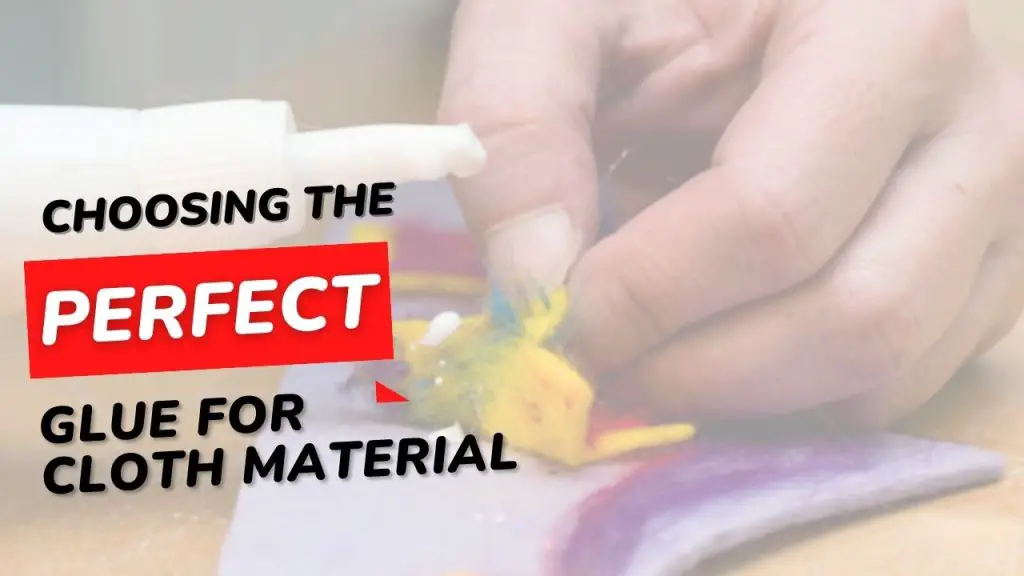Ever been lost in the maze of adhesive aisles, wondering which glue will keep your latest textile project from coming apart at the seams? We feel you!
Navigating the world of fabric adhesives can feel like decoding a complex puzzle, especially when there are so many products with their own unique merits.
But here’s some good news: we’ve got your back, and your bond!
Whether you’re looking to mend a tear, bond a patch, or embark on a brand-new crafty endeavor, knowing which adhesive is right for the job is crucial.
Keep on reading to find the perfect adhesive for your textile treasures!
Understanding Different Types of Fabric Glues
Here is a quick rundown of different types of fabric glues and the suitable conditions they are ideal for:
Permanent Fabric Glue
- Perfect for projects that require ultimate durability
- Forms an unbreakable bond that withstands repeated washing and wearing
- Ideal for attaching patches, hemming garments, or bonding heavy-duty fabrics
- Look for waterproof options with excellent adhesion properties
Fusible Web
- Creates seamless bonds without visible stitching
- Melts when heated with an iron for flawless connections between layers of fabric
- Commonly used in appliqué work or joining pieces of cloth together seamlessly
Temporary Fabric Glue
- Provides a temporary bond that can be easily removed or washed out
- Ideal for basting hems before permanent sewing or attaching trims and embellishments
- Offers flexibility and versatility in your projects
Importance of Compatibility
Choosing a fabric glue that works well with your specific material is essential for optimal results. Consider the following:
- Ensure the adhesive is suitable for both synthetic and natural fibers
- Look for a fabric glue that remains flexible after drying to avoid stiffening delicate fabrics
- Opt for a glue with good elasticity when working with stretchy textiles
Expert-Recommended Fabric Glues for All Your Needs
When it comes to finding the perfect glue for your fabric projects, you want nothing but the best. That’s why we’ve compiled a list of top-rated fabric glues that have been tried and tested by experts and users alike. These glues are guaranteed to provide reliable and effective results, ensuring your fabrics stay securely bonded.
UHU Textile Glue
For those in search of an adhesive specifically engineered for fabrics, the UHU Textile Glue stands tall among its competitors. This adhesive is celebrated for the flexibility it retains post drying, ensuring your material retains its natural movement without any rigidness.
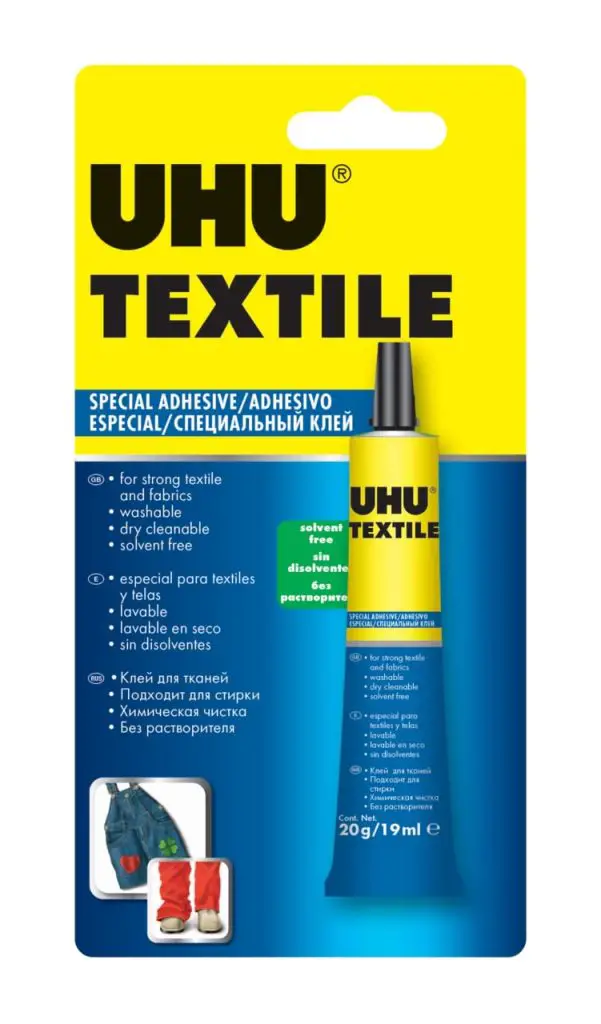
It’s resistant to washing, making it the go-to choice for garment repairs or securely attaching decorative patches. Moreover, it adheres seamlessly to a plethora of fabrics including denim, cotton, and silk.
Beacon Fabri-Tac Permanent Adhesive
Praised for its unmatched bonding capabilities, the Beacon Fabri-Tac promises a lasting union between diverse fabric types. Its drying process is swift, and the resultant bond remains elastic, adapting well to the normal stresses fabrics undergo.

This makes it an indispensable tool for those working with textiles that need to endure regular usage and movements.
Aleene’s Original Tacky Glue
A favorite amongst DIY craftspeople and creative aficionados, Aleene’s Original Tacky Glue offers an unrivaled grip on both porous and non-porous textiles.
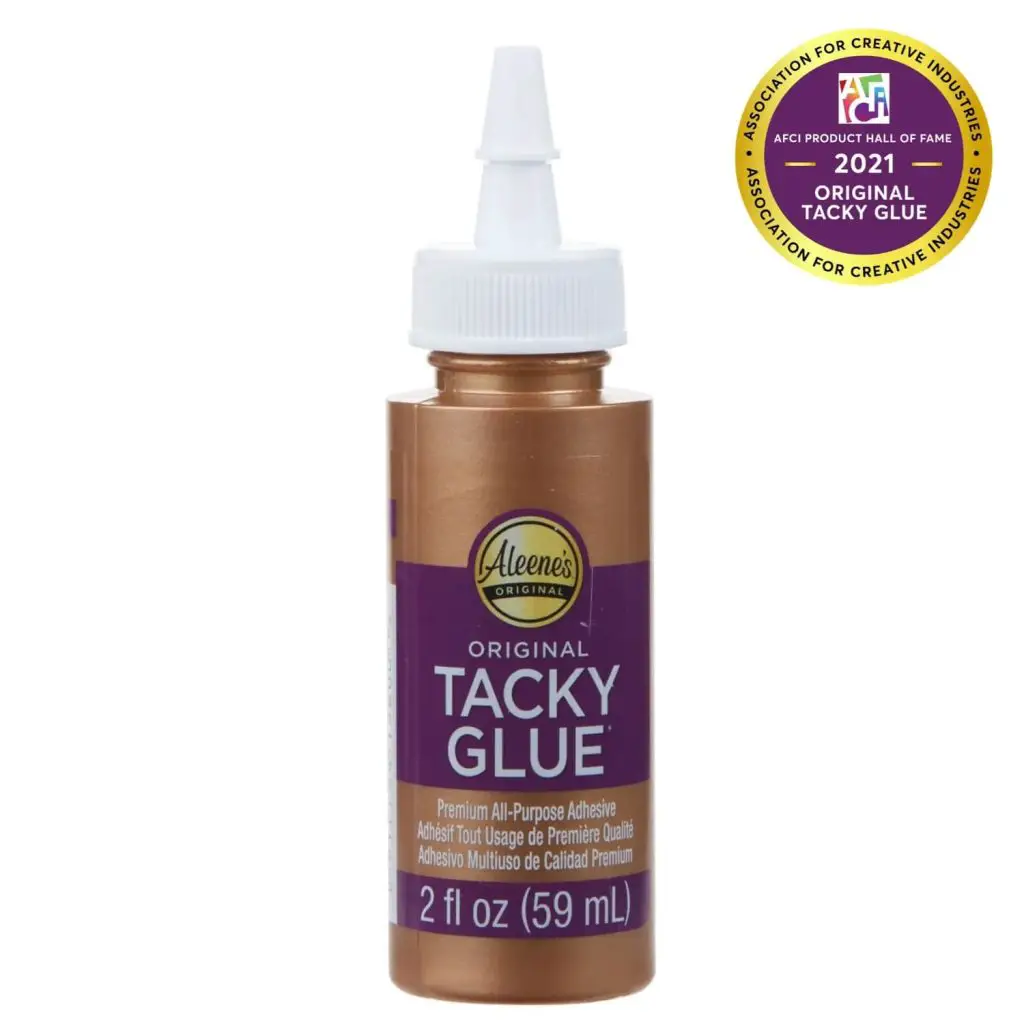
Its dense consistency allows for meticulous application, ensuring zero spills or unwanted drips. An added bonus? Post-application, you can confidently machine-wash your project in just three days!
Dritz Unique Stitch Fabric Glue
For projects that demand a more robust adhesive, the Dritz Unique Stitch Fabric Glue comes to the rescue. This powerhouse is adept at bonding a variety of materials, making it an ideal choice for intricate jobs like furniture upholstery or repairs on leather goods.
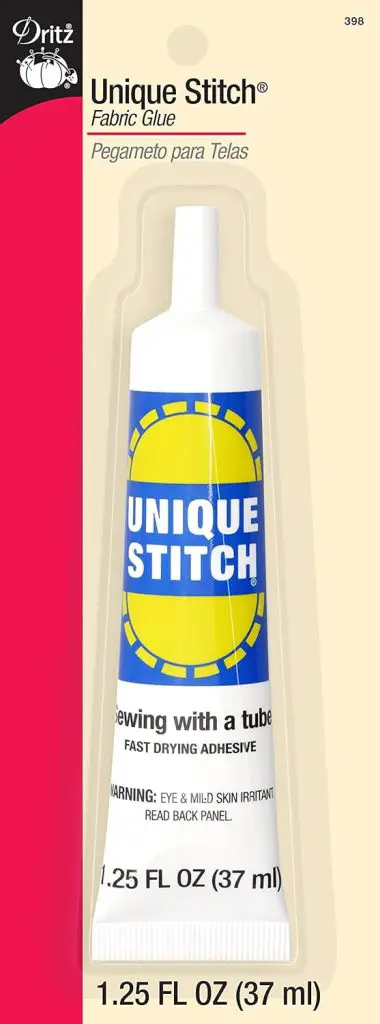
The bond it establishes is quite strong, yet it retains the flexibility to accommodate any fabric movement, whether stretching or folding.
Gorilla Super Glue Gel
While Gorilla Super Glue Gel may not have been initially developed for textiles, its efficacy in this realm is undeniable. A multitasker, this adhesive works wonders in cementing different fabric types.
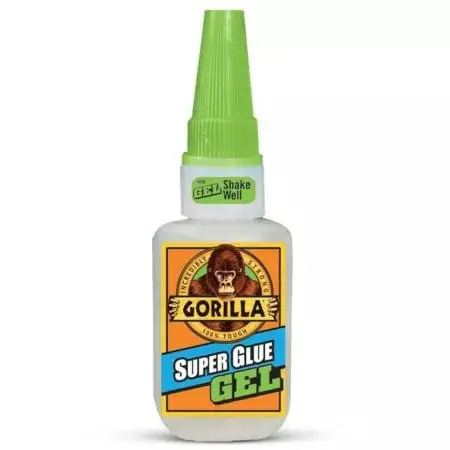
The swift drying feature ensures prompt results, and the gel-like texture guarantees a clean application, devoid of any runny mishaps.
Choosing the Perfect Fabric Glue – Expert Tips for Making the Right Decision
When it comes to finding the ideal glue for your fabric projects, there are several crucial factors that you should take into consideration. By understanding these key elements, you can confidently select a product that will meet your specific needs and deliver outstanding results. Here are some expert tips to keep in mind:
- Fabric Compatibility: Different fabrics require different types of adhesive solutions. Choose a fabric glue that is compatible with the material you’re working with.
- Intended Use: Consider whether you need a permanent bond or temporary attachment. Choose a fabric glue that suits your desired level of durability.
- Application Method: Take into account your comfort level with different application methods. Consider liquid adhesives, sticks, sprays, or tapes.
- Drying Time: Consider whether quick-drying is crucial for your project or if you have enough time available for longer curing periods.
- Washability: Choose a waterproof or washable fabric glue if your glued fabric will be subjected to frequent washing or exposure to water.
- Craftsmanship Level: Consider your expertise in crafting. Beginners may find it easier to work with no-sew fabric glues or fusible adhesives, while advanced crafters may prefer more specialized glues for intricate projects.
- Safety Considerations: Prioritize safety by choosing non-toxic fabric glues that are safe to use around children and pets. Consider any specific allergies or sensitivities to certain adhesive ingredients.
Preparing Your Fabric for Glue Application: Quick Guide
To achieve the best results with fabric glue, it’s essential to properly prepare your fabric. Here’s how you can do so:
- Cleanse Your Fabric: Thoroughly clean your fabric before applying any adhesive to remove dirt, dust, and stains that can interfere with the bonding process.
- Test on a Scrap Piece: Always test the glue on a scrap piece of fabric before using it on your actual project to assess its compatibility and make any necessary adjustments.
- Trim Loose Threads: Carefully trim any loose threads or frayed edges from your fabric before gluing to create an even bond.
- Pressing for Perfection: Consider pressing fabrics like cotton or linen with an iron before applying glue to create a smoother surface that enhances adhesion quality.
- Apply Sparingly: Use a thin layer of fabric glue instead of excessive amounts to achieve precise application without seepage or clumping.
- Allow Ample Drying Time: Exercise patience and allow sufficient drying time according to the manufacturer’s instructions before handling or moving your project to ensure optimal integrity.
- Curing Periods: Avoid washing, ironing, or stretching the glued fabric during curing periods to prevent weaker bonds.
Expert Tips for Caring and Maintaining Your Glued Fabric
Congratulations on successfully bonding your fabric using the best glue available! Now, let’s talk about how to properly care for and maintain your glued fabric to ensure its longevity.
- Follow Manufacturer’s Instructions: Read and follow the instructions provided by the fabric glue manufacturer for specific cleaning and maintenance requirements.
- Gentle Handwashing: Handwash your glued fabric using a mild detergent suitable for delicate fabrics. Gently agitate the water to create suds and rub away dirt or stains without applying excessive pressure on the bond.
- Say No to Harsh Chemicals: Avoid using bleach or strong detergents when cleaning or spot-cleaning your glued fabric, as they can weaken or dissolve the adhesive bond. Opt for gentle cleaners designed for delicate fabrics.
- Air Drying Is Key: After washing, lay your glued fabric flat on a clean towel or hang it up in a well-ventilated area away from direct sunlight until completely dry. Avoid wringing forcefully to prevent damage to the bond and fibers.
- Spot Cleaning Magic: If only a small portion of your garment requires cleaning, spot-cleaning is an effective method while minimizing exposure to moisture that could potentially affect other areas of bonding.
- Protect Against Heat Damage: Avoid exposing garments with bonded areas directly to high temperatures, such as ironing, unless the glue is specifically designed to withstand heat. Use a pressing cloth or iron on low heat with gentle pressure if ironing becomes necessary.
- Proper Storage Matters: Store your glued fabric items in a cool and dry place away from direct sunlight when not in use to prevent degradation of the adhesive bond over time.
Conclusion
Adhesives are the silent partner, tirelessly behind the scenes, ensuring every piece, patch, or design remains intact, come rain or shine. Through our comprehensive exploration of fabric glues, it’s evident that every adhesive has its own tale to tell, its own unique chemistry that makes it suitable for a specific task.
But beyond the technicalities and specifics, what truly stands out is the magic that the right adhesive brings to a project. It’s not just about sticking two pieces of fabric together; it’s about crafting memories, preserving legacies, and often, saving our favorite garments from oblivion.
So, here’s to stronger bonds, both on fabric and in life! Keep crafting, keep exploring, and let the world be your canvas, held together with the perfect glue. Happy crafting!

